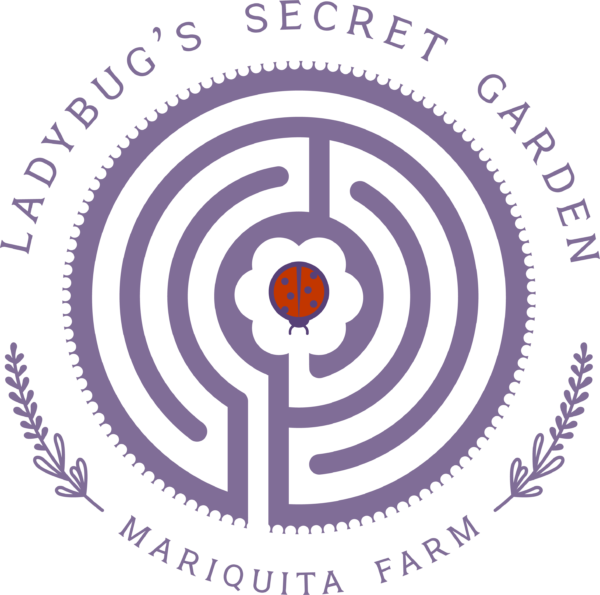Letters From Andy
Ladybug Postcard
A Hollywood Drama
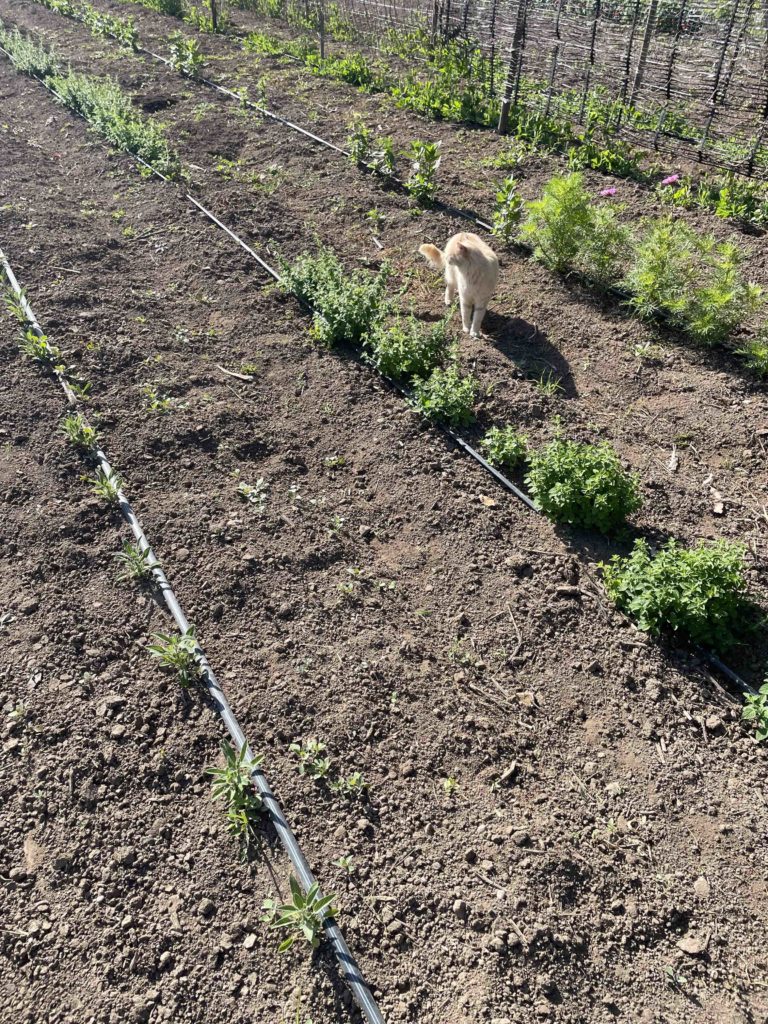
Young sage on left, nepitella (or Roman mint) by Samson, the “royal” cat.
If a prominent plant family were ever to be cast for one of Hollywood’s full-on “franchise treatments,” with a series, some movies, then spin-offs, with prequels and sequels and endless branding and merchandising opportunities, then certainly the Mints deserve consideration; consider the family’s sweeping cast of characters with their aromatic flair and drama:
The mint family is now properly known as the “Lamiacea,” and there are over 230 different genera within it. The family was once called the “Labiatea” until the taxonomists changed everything around to make botany fun and challenging. Think of the present day English royal family, which used to be the “House of Saxe Coburg and Gotha” until the First World War made a German surname unpalatable to the English Monarch, so he changed the family name to “House of Windsor,” renaming his dynasty after their principle castle of Windsor. The mint family- or Lamiacea– even have royalty in their blood. “Basil” even means “regal,” and basil is in the mint family, and they are worth a miniseries all on their own.
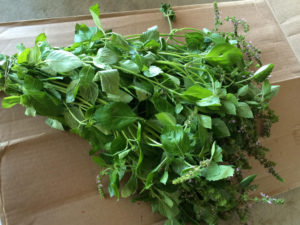
Tulsi basil
Basils are richly scented with evocative, spicy perfumes. They are reputed to be good in the kitchen and in bed. One of them, Tulsi, is even a Goddess. There are many branches in the mint family, but a common thread that almost all the distant cousins share is that they are fragrant. When I was reading up on the mint family I was surprised to even find that the teak trees are mints! I wonder what their foliage smells like? Then I remembered that when I helped a friend with his basil farm down in Todos Santos, we had a Genovese basil plant at the edge of the field that escaped getting turned under by the disk at the end of the season. When next spring came that plant had grown a trunk as thick as my arm and was as tall as I was. And I read that wood of Tulsi basil is carved into prayer beads.
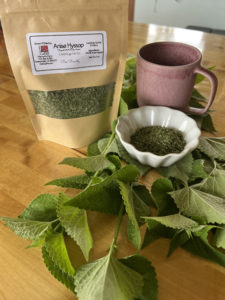
Anise Hyssop, another member of the mint family.
Then there are the so-called “mints,” themselves, those aromatic herbs that have lent their common name to the family Lamiaceae. There’s Peppermint to clean up your breath, while Pennyroyal mint is known for being a folk abortifacient. Spearmint takes you to the horse races for a proper mint julep and Applemint tea soothes your jagged nerves. Mints come from all over the world and influence all the cuisines that they touch. The Mints could carry a travel-the-world cooking show all by themselves. From Vietnam to North Africa to England mint just keeps popping up on menus in fancy drinks and herbal tisanes, in stews and salads, and in rubs, jellies, and marinades.
Lavenders are mints too. Like their cousins, they’re fragrant. And, as with other mints, their stems are square. Lavender plays a “walk-on role” on the dessert menu, and it shows up in fancy cocktails and in candies, but it’s a full-on megastar in the perfume business. And it’s one of those rare plants whose name is synonymous with a color and an attitude; remember the Lavender Panthers?
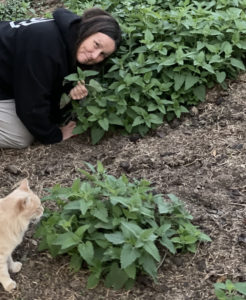
Starr mingling with royalty, Samson, by the catnip.
People aren’t the only creatures that appreciate mint. There are mints for cats, like catnip, catmint, and cat thyme. And there are mints to attract bees, like Bee Balm, and mints to repel fleas, like Rosemary. Sages are mints, and many of them are extremely attractive to birds. Pineapple sage leaves makes a nice calming, herbal tisane for a human but the Hummingbirds come to the plants to tank up on sugary nectar from the plant’s long red flowers and they get a sweet rush that gets their tiny hearts pumping up to 1,260 beats per minute. Culinary sage is revered as an herb for roasting game birds, but it’s also synonymous with wisdom, and a “sage” is a wise man.
There’s also a sage called Salvia divinorum, the “Diviner’s sage,” that can bring on hallucinations and other altered states of consciousness. The New Riders Of The Purple Sage were a drugged up country rock band back in the 70s in the Bay Area, whose songbook emphasized mescalito and marijuana but, oddly, not the psychedelic Diviners’ sage. Their band name alluded to the dime store western novel “Riders of Purple Sage,” by Zane Gray. Ironically, the Great Basin desert’s sagebrush that Zane Grey romantically infused with his purple prose is not a true sage, or even a mint family member, but actually belongs to the Artemisia clan. But what family drama would be complete without some interloper trying to seize the family’s inheritance?
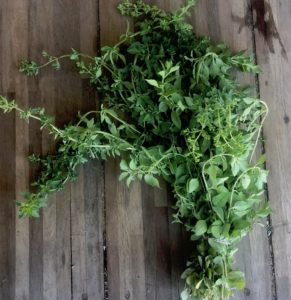
Fresh oregano
Oreganos and marjorams are mints that typically enjoy sunnier, drier, and more well-drained conditions. We speak of “Italian oregano,” “Greek oregano,” and “Sweet Marjoram,” and “Za’atar,” or “Syrian marjoram,” but, as so often in life, once we leave the precise, library-like confines of taxonomy behind and go out into the field, we encounter a more confusing family dynamic. The oreganos and marjorams grow wild, as well as in the garden, and they interbreed willingly. They’ve been carried by gardeners and traded around the world to the point where precise origins and genetic makeup of any particular plant are blurred with time. It’s probably more correct to think of the different types of oregano/marjoram as being “points along a spectrum,” or salient characters from a hybrid swarm. There’s drama there, but if herb makes your red sauce piquant, it’s all good.
Thyme to end…Thymes are mints too. We’ve got “regular” thyme in our gardens, and Lemon thyme, Silver thyme, creeping thyme, and Lime thyme. In fact, many of the mint family members grow well here, and Starr has been drying many of them for use in the kitchen, bath, flower or in the teacup.
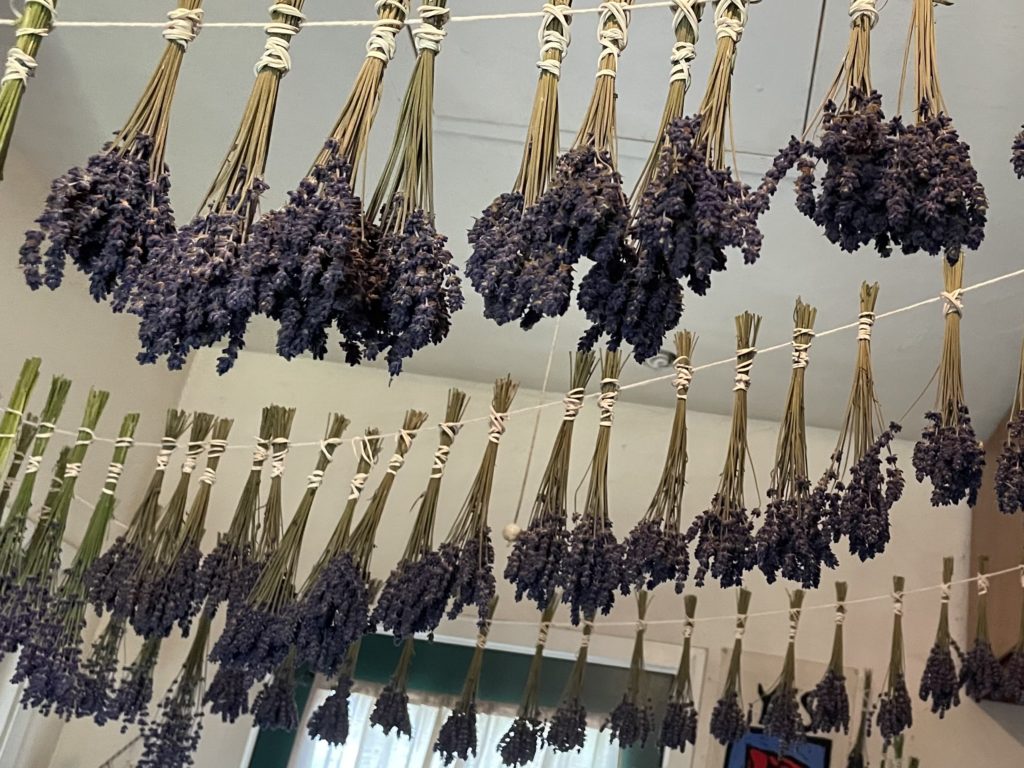
Bundles of Lavender in the drying room.
Throughout the season we can offer:
English and French Lavender wands, loose Lavender florets, and Lavender bath salts
Anise Hyssop
Culinary Oregano
Sweet Marjoram
Za’atar, or Syrian Marjoram
Delightful Rosemary
and Plenty of Thyme
Plus we’ve got garden Sage planted and on its way, and of course we have Lemon Balm and Lemon Thyme to keep our Lemon trees company. And we even have Lemon Verbena, which isn’t (at this moment) technically a mint, but there are taxonomists who would like to put it in the Lamiaceae. If anybody can make taxonomy sexy, spicy, comforting, or hallucinatory, it would be the mint family.
Everyone take your places…Ready…Camera…Action!
Andy & the crew at Mariquita Farm.
© 2022 Essay by Andy Griffin
Photos by Andy Griffin & Starling Linden
Saving Seeds
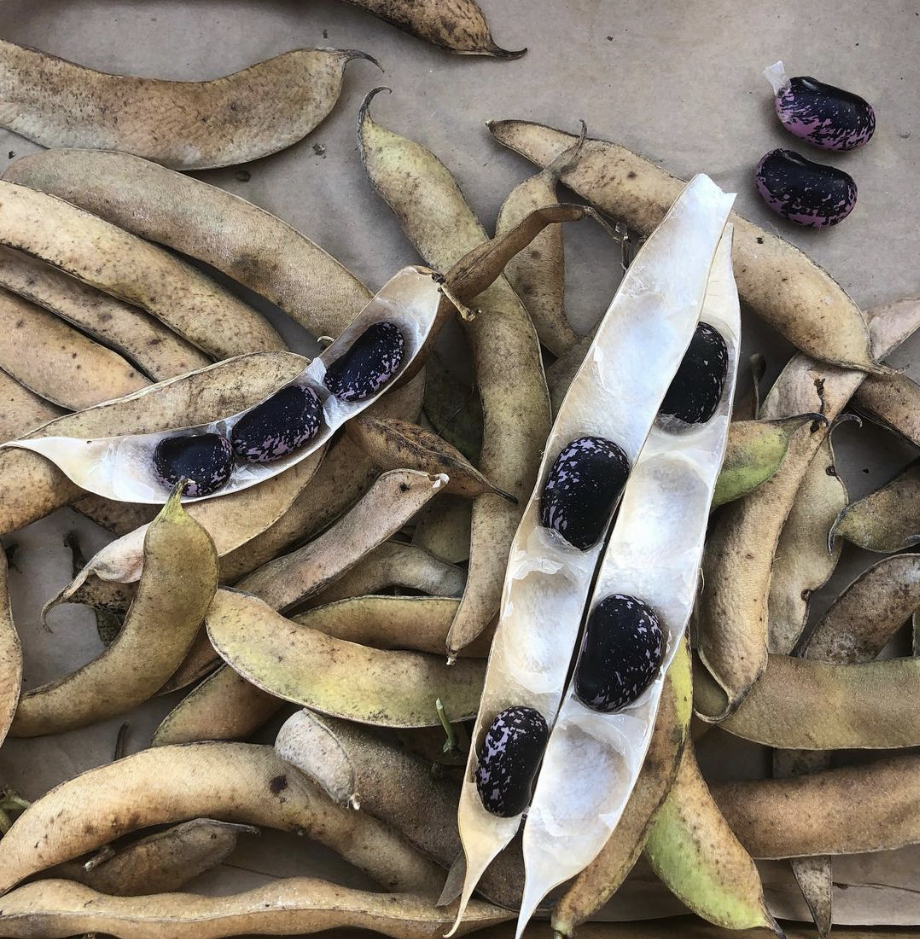
When I think about the desirability and feasibility of a farm saving its own seed, my mind turns from considering the actual mechanics of how to go about maintaining and reproducing healthy seed stock to reflecting on the high cost of rent. A look back at the business practices of The Beatles is illuminating, as well. Yeah, yeah, yeah! So here’s my perspective:
The first thing to bear in mind is that a seed crop inevitably takes a lot more time to realize its potential than would the harvest of the same plant grown for the consumer. Take lettuce, for example; if a romaine lettuce seed can sprout and grow into a plant that is the ideal size for harvest in 60 days, then the same plant grown for a seed crop would still have to grow until it is mature enough to flower. After flowering, the seed grower still has to wait for the pollinated lettuce flowers to set seed and then dry down to the point that the seeds can be easily threshed and collected. By now, you’re talking about almost a year of time invested by the farmer in a seed crop of lettuce. Crops other than lettuce might take even longer to produce. Celery can grow a whole year before it bothers to send up a seed stalk, and the celery plant might only produce the mature seed after 18 months. The time that a seed crop takes to produce is a very important consideration because “time is money” and, if you’re renting the space you’re growing on, then rent exercises a constant force of gravity on your decision making process.
I’m farming within several miles of the ocean near Santa Cruz, with one rented parcel and one field I own. The landowners are not managing most of the farmland around here. Maybe the owners’ grandparents were farmers, or their great-grandparents, but the present day owners are often/usually the descendants of the historical farmers and they are the beneficiaries of family trusts that rent the land to the contemporary farmers. The Monterey Bay Area is a very pleasant place to live so there’s constant market pressure on landowners to develop rural land into housing. If you see a large tract of ground being farmed around here anymore you can assume that it is such good farmland that it is worth keeping in agriculture. Out along San Andreas Road, for example, within sight and sound of the waves breaking on Sunset beach, the farmland will rent for at least $2,500/acre per year, and in some cases even more than that. That land is great for strawberry production. If you’re a landowner with a 40 acre parcel there you’d be a fool to be a farmer. Forty acres rented for strawberry production yields $100,000 to the landlord with payments due on the first day of the year. You’d be super lucky to realize that kind of income actually growing crops on that ground, and you’d be subject to every vulnerability and liability that every grower faces. There are hardly any crops other than strawberries that can hope to cover the upfront costs of such expensive land and seed crops definitely don’t “pencil out.”
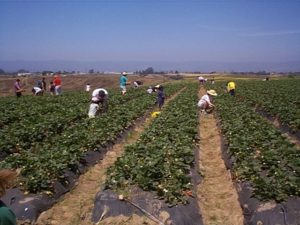 Further up the Pajaro Valley, away from the ocean, where the conditions for strawberries are not quite so perfect, the price per acre may fall to $2000/acre by Murphy’s Crossing Road or even to $1800/acre out by the county line. By the time you get to Hollister, where the land is not cool enough for strawberries, land rents may only total $700 or $800/acre, which is cheap enough to allow production of cheaper crops, than strawberries, like summer squash, broccoli, sweet corn, or peppers, but the land is still not cheap enough to make the costs of managing the land for most seed crops. There actually are a number of seed companies located in the Hollister/Gilroy area, but they are mostly focused on the breeding and development work for new crop varieties. Not only is the Hollister/Gilroy area a great environment for growing a wide range of floral and edible crops, the neighborhood is also a pleasant (if expensive) place for the seed scientists to live and do their work. But once a target crop has been “improved” under “laboratory conditions” by the plant scientists, then the actual bulk seed production is farmed out to a grower in some other part of the world. Seed companies look for places where the climate and environmental conditions are acceptable, but the cost of land is low and the cost of labor is cheaper than dirt. Here’s where the Fab Four are worth remembering.
Further up the Pajaro Valley, away from the ocean, where the conditions for strawberries are not quite so perfect, the price per acre may fall to $2000/acre by Murphy’s Crossing Road or even to $1800/acre out by the county line. By the time you get to Hollister, where the land is not cool enough for strawberries, land rents may only total $700 or $800/acre, which is cheap enough to allow production of cheaper crops, than strawberries, like summer squash, broccoli, sweet corn, or peppers, but the land is still not cheap enough to make the costs of managing the land for most seed crops. There actually are a number of seed companies located in the Hollister/Gilroy area, but they are mostly focused on the breeding and development work for new crop varieties. Not only is the Hollister/Gilroy area a great environment for growing a wide range of floral and edible crops, the neighborhood is also a pleasant (if expensive) place for the seed scientists to live and do their work. But once a target crop has been “improved” under “laboratory conditions” by the plant scientists, then the actual bulk seed production is farmed out to a grower in some other part of the world. Seed companies look for places where the climate and environmental conditions are acceptable, but the cost of land is low and the cost of labor is cheaper than dirt. Here’s where the Fab Four are worth remembering.
When The Beatles were starting out as teenagers they got their chops down by playing all night long in the strip clubs along the Reeperbahn in Hamburg, Germany. They played loud and they played covers of other artists’ music, emulating their heroes, like Little Richard, Chuck Berry, or the Isley Brothers. But by the time they were recording their third album, A Hard Day’s Night, they’d learned that they’d make the most money if they composed and performed their own songs. Critics could listen to their music and hear echoes of all the influences that they’d absorbed. “Cultural appropriation” you could say, if you listen to “Back in The USSR,” for example, and hear Chuck Berry. But unlike some of their contemporaries who signed their names to other people’s work, the Beatles themselves were always clear about their admiration of the musicians that inspired them and keen to give credit where credit was due. If you want to look at glaring examples of “Cultural appropriation” look at the behavior of the big seed companies.
Seeds, like songs, used to be passed from one generation to the next. Who wrote “Shady Grove” and when did they do it? Who saved the first Scarlet Runner bean seed from a wild plant to sow in their garden? With music, the folk tradition guarded and honored the roots of the music even as successive generations of artists reinterpreted the melodies and themes of the songs they’d grown up with. With agriculture, the different varieties of crop plants were selected for over generations by tribal people you’ll never hear of, and women probably did most of the work. When a seed company takes a traditional, open pollinated crop like corn, which was nurtured out of wild nature by the indigenous people in the mountains of Central America, and they “improve” it, they can get a patent for their creation and start earning money. They don’t have to share any of the profits of their work with the people who did 99% of the historical work of selecting from the raw materials of nature. Just as the Beatles chose to focus on recording their own songs, however derivative they may have been of other artists’ music, the seed companies can choose to focus on producing and selling the “improved ” varieties of trusted, traditional crops that they hold patent rights on. The more successful seed companies buy out the less successful ones that were selling traditional, un-patented seed and close them down to gain more control of the market, or they may keep the brands alive but replace the open pollinated seeds with their proprietary varieties. And the price of seed to the grower goes UP, UP, UP!
Yes, because seeds are like songs, a grower can make their own music and produce their own seed. If a seed variety gets expensive enough, maybe it even becomes worthwhile to produce it on rented land in the first world. But besides rent costs, there are also other management issues that complicate seed saving. With some crops that are pollinated by the wind, like corn, it can be hard to find a spot that is isolated enough so that the seed crop is not negatively affected by being cross pollinated by another crop. With crops that insects or bats pollinate there can be isolation problems too, but they can be managed by tenting the mother plants with a system of screens. All in all, saving seed can be fun and interesting, but it can be a distracting hassle if the income of the farm is primarily derived from the sales of food crops. At Mariquita Farm I can’t really afford to save much of my own seed for the reasons outlined above, but I’ve always done it when driven to it by scarcity or frustration. Take the Scarlet Runner bean that evolved in Central America that I’ve alluded to as an example:
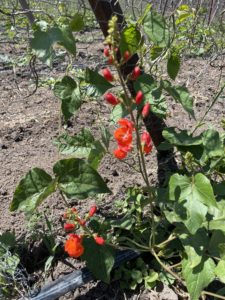
Akahana mame in flower
Following the Spanish conquest of the Americas, the Scarlet Runner bean made its way by donkey back and sailing ship from the mountains of Oaxaca to ports of Japan. Japanese farmers took the culture of this bean up and in time selected the largest beans to replant until they’d achieved an absolutely giant bean, which they called the “Akahana mame.” Because the cool, coastal conditions on my farm in Corralitos mimic the original mountain conditions where the runner bean evolved, I know I can grow good Akahana mame here. For years I’d been getting the seed from Kitazawa Seeds, an Oakland based seed company that traded in Asian crop varieties. Their seed was good, but expensive, so I began saving my own seed and, boy, am I glad I did. Last winter Kitazawa Seed got sold to a larger company, and I just went on the new website to see about getting some more Akahana mame seed. I’ve got a few blank spots in the beds that I could fill out and I’ve planted all my own seed. But the new owners want- get this!!!- $92.88/pound for their runner bean seed! Ninety-two dollars and eighty- eight cents per pound! Peaches H. Christ! Here’s the link.
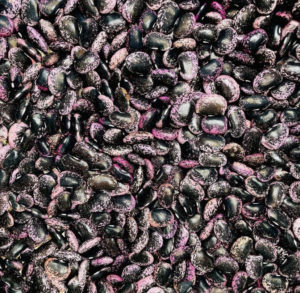
Scarlett Runner Beans
So yes, I’ll be saving more Akahana mame seed going forward. Luckily for me, I own a patch of ground that is only suited for small-scale production, and rent is not an issue. My field is isolated, so I don’t face difficulties with cross pollination, plus I’m crabby enough at the seed companies to make the work of sorting and selecting seed a satisfying task. Here are some pix of our Akahana mame beds. A bean we can all get excited about.
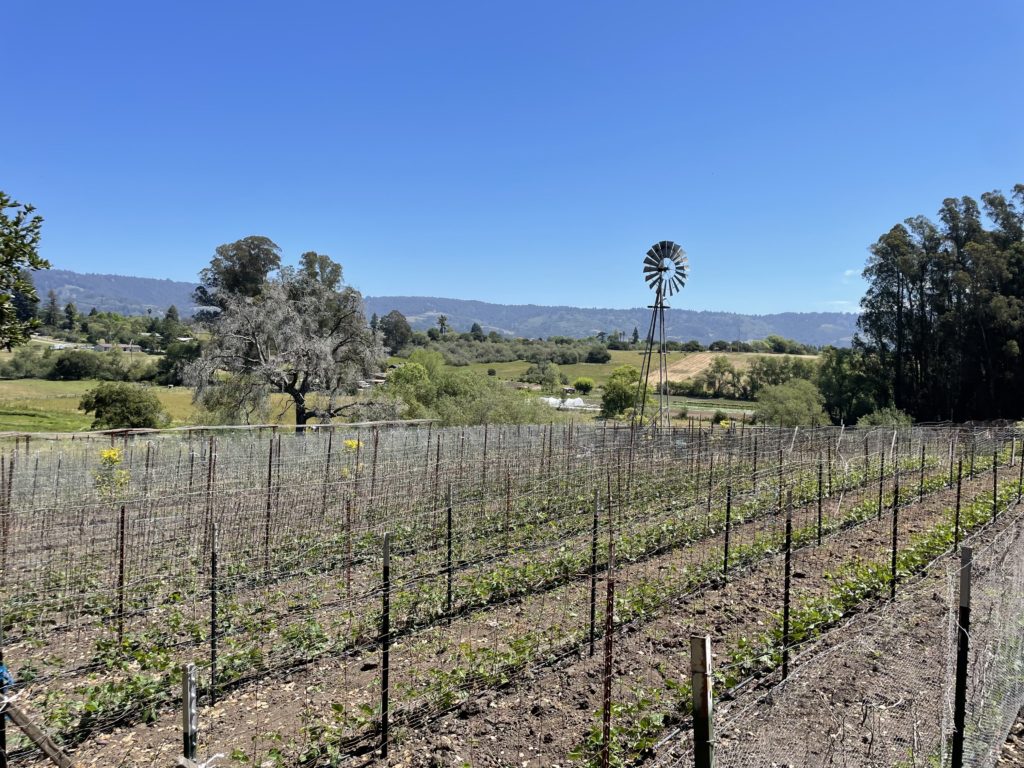
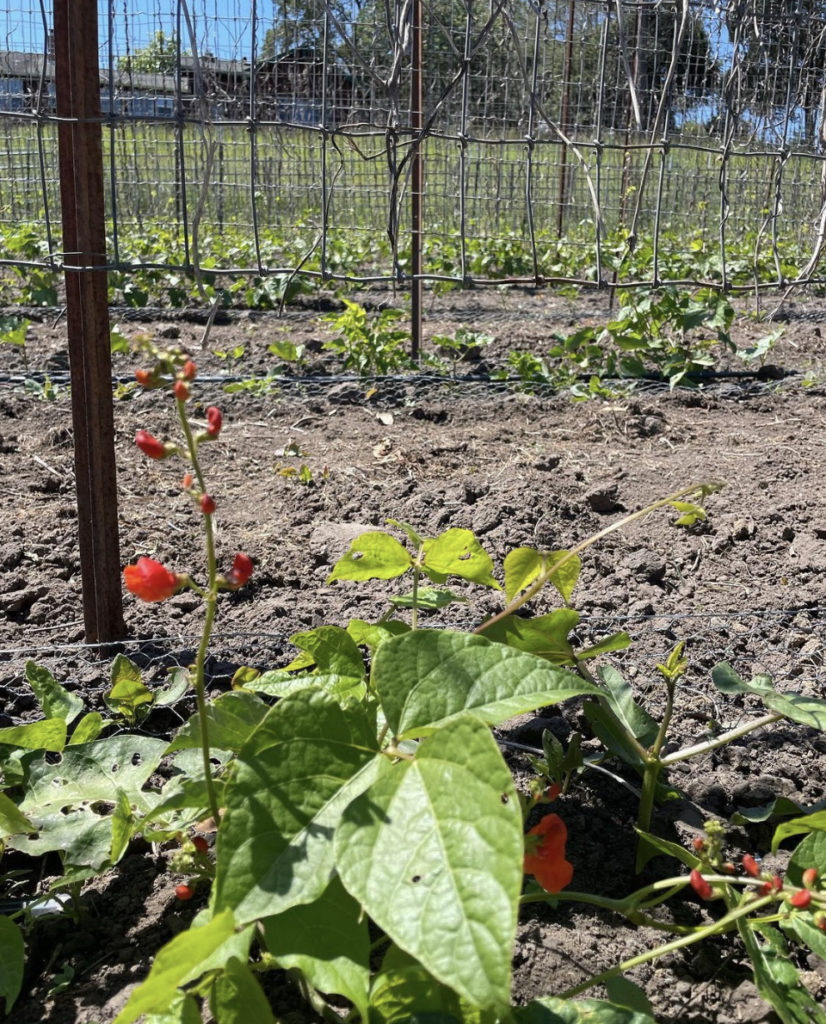
First Akahana mame flower – Scarlet Runner bean!
Andy & the crew at Mariquita Farm.
© 2022 Essay by Andy Griffin
Photos by Andy Griffin
Beware Beelzebub
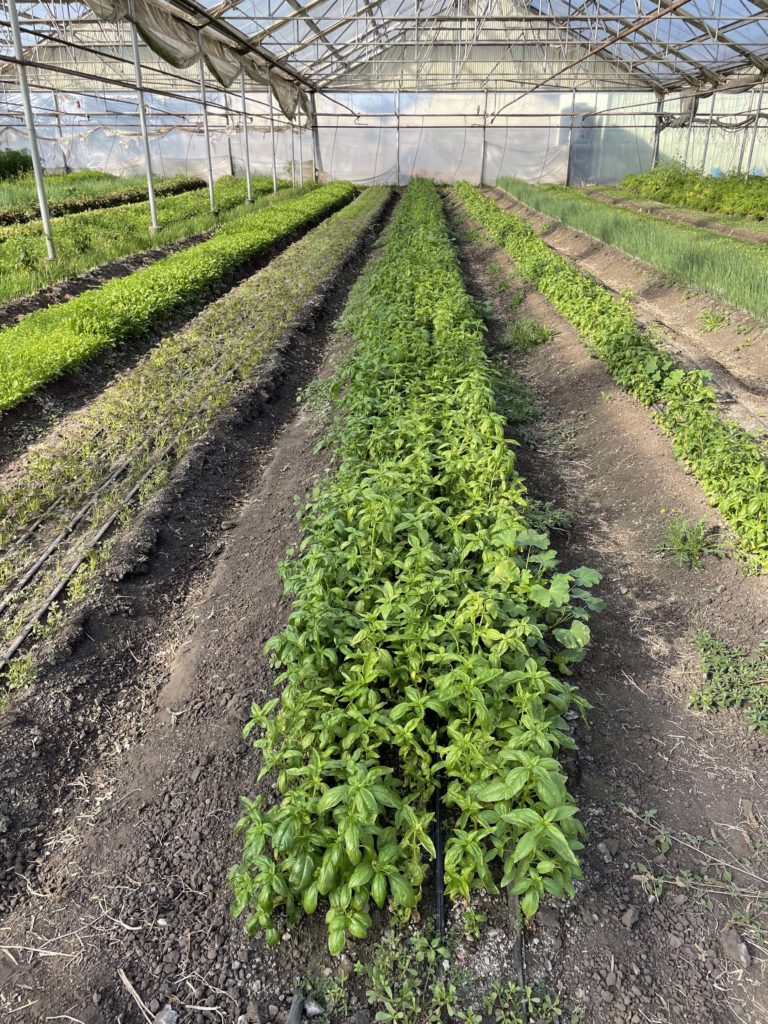
Basil, the backyard gardener and amateur ethno botanist from Basel, took a step into the basilica of St Basil’s Cathedral, clutching a bunch of basil in his right hand. He glanced around, to the left and to the right, hurriedly, uneasily, and frequently, before advancing to the altar, as though there might be a basilisk lurking in the shadows. But why was Basil so timid and frightful? He, of all people, should have known that he was both armed, and armored, by the little bunch of herb in his hand.
Basil is not just an aromatic herb in the mint family. A lot of people don’t know this, but basil is the only cure for the bite of the basilisk. True, basilisks are extremely ferocious and cruel magical reptiles, ready and able to kill with just a glance, and they spread a wave of toxic venom in their wake, but they are helpless in the presence of basil in the same way that vampires can’t cope with garlic. The word basil in ancient Greek meant “monarch” or “Kingly.” But just as the basilisk earned its name and reputation as the “King of Serpents” by virtue of its deadly and uncanny powers – and because of the crown shaped crest on its head- so the most royal and powerful of herbs got named “Basil.” Basil, the good herb, trumps the basilisk, the evil serpent. And basil isn’t only good at counteracting the effects of basilisk venom. All manner of evil creatures are repelled by basil, from the common housefly to the Prince of Hell and the Lord of Flies, Beelzebub himself.
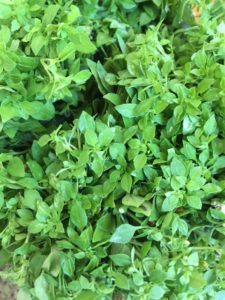 Basil the gardener reached the altar and placed the bunch of basil from his garden next to an open Bible. When it came time the Priest could choose to use this herbal offering as a tender and aromatic wand with which to sprinkle holy water on the gathered worshippers. With the orthodoxy of the Greek Orthodox in mind, Basil had brought the tiny-leaved, sweet scented Greek basil to the basilica, not the muskier, more clove-like Tulsi basil that is revered in Hindu tradition as a manifestation of the Goddess Tulsi.
Basil the gardener reached the altar and placed the bunch of basil from his garden next to an open Bible. When it came time the Priest could choose to use this herbal offering as a tender and aromatic wand with which to sprinkle holy water on the gathered worshippers. With the orthodoxy of the Greek Orthodox in mind, Basil had brought the tiny-leaved, sweet scented Greek basil to the basilica, not the muskier, more clove-like Tulsi basil that is revered in Hindu tradition as a manifestation of the Goddess Tulsi.
Basil grew many kinds of basil in his garden back in Basel because there are many kinds of basil with many different uses. All basil varieties originally evolved in Southeast Asia, and in a warm tropical climate they can all be short-lived perennials. At home back in India, Tulsi basil can grow to be quite large and woody and those woody stems are carved into prayer beads. In ancient Greece and Rome there were basil varieties that were used in the manufacture of perfumes that were used by kings to mask their royal odors. Meanwhile, in a more Italian context, history tells us that vases of fresh basil were used by the romantically inclined as gifts to express the tender feelings they have for their lovers.
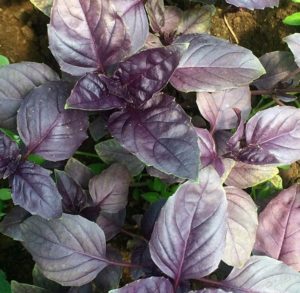 Basel, in Switzerland, does not have the most appropriate climate for growing basil. So to grow his basil in Basel Basil used a greenhouse setup to get his plants through the cold winters of Central Europe. Besides the Tiny leafed Greek Basil, he also grew Purple or Opal basil, Lemon scented basil, Anise scented basil, and Genovese basil, but all under glass. The Swiss city was named Basel because it was once a Roman city, and the center of power in any Roman area was the basilica, where the monarch or king held court. Basil, the gardener, should have known that he too came into this world endowed with the name, meaning “kingly,” yet he fled the basilica of Saint Basil’s Cathedral like a thief, once he’d left his little bundle of basil on the altar. Why?
Basel, in Switzerland, does not have the most appropriate climate for growing basil. So to grow his basil in Basel Basil used a greenhouse setup to get his plants through the cold winters of Central Europe. Besides the Tiny leafed Greek Basil, he also grew Purple or Opal basil, Lemon scented basil, Anise scented basil, and Genovese basil, but all under glass. The Swiss city was named Basel because it was once a Roman city, and the center of power in any Roman area was the basilica, where the monarch or king held court. Basil, the gardener, should have known that he too came into this world endowed with the name, meaning “kingly,” yet he fled the basilica of Saint Basil’s Cathedral like a thief, once he’d left his little bundle of basil on the altar. Why?
I can only speculate, but perhaps Basil was fearful because he was a Western foreigner in Moscow, in Red Square, in the belly of the beast, so to speak. The original Saint Basil had been called “A Fool for Christ” and “The Wonderworker of Moscow” because he shoplifted to feed the poor, he went about naked in the streets, and he chastised the autocrat of the day, Ivan the Terrible, for being so terrible. The Moscow church that, ironically, was built by Ivan the Terrible became the most iconic structure in Russia and was named after Saint Basil to honor him for his humane instincts. But times have changed in Moscow and there’s a new Ivan the Terrible in town.
We’re all going to need a lot of basil going forward. Luckily, I’ve planted basil and this week we can enjoy our first harvest. With the onset of warm weather we should soon have a lot, but if you’re going to have a lot of something it might as well be basil. It’s such a useful herb; the mere scent of basil is uplifting. Basil can attract lovers and repel demons and flies. Basil is useful in religious ceremonies and may, in fact, be divine. Oh, and the Italians make pesto with it.
Get a bottle of our Everyday Extra Virgin Olive Oil grown from Belle Farms in Aptos, CA., pine nuts, a nice lemon and a fine loaf of sourdough bread and you are set for next week.
Enjoy!
Andy & the crew at Mariquita Farm.
© 2022 Essay by Andy Griffin
Photos by Andy Griffin
The Many Cats of Mariquita
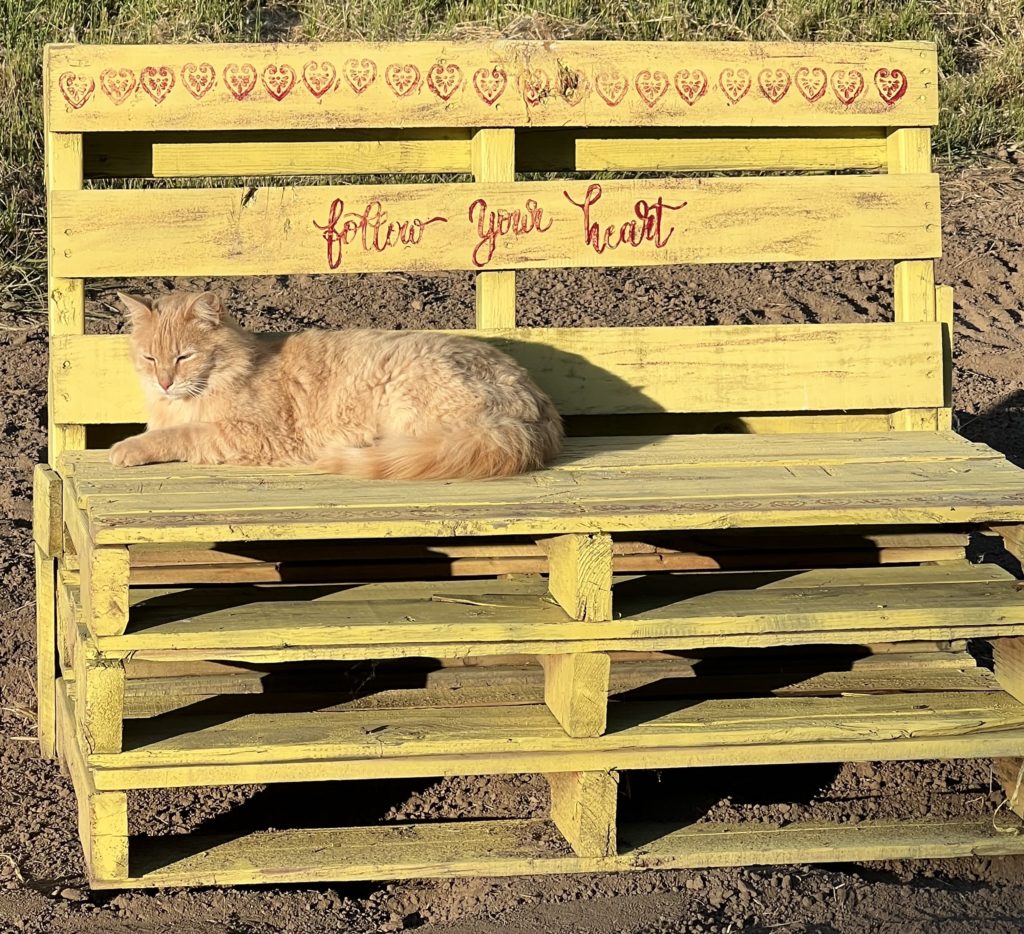
Samson watching over the Mariquita labyrinth
Oh, my God, the violence lay hidden in their hearts! One little old lady said she kept a loaded rifle by her sliding glass door so that if she saw one she could open the door… and open fire. Another woman said she connected a garden hose from the exhaust pipe of her husband’s Cadillac so that she could gas them to death.
I’d been invited to speak to a local Watsonville ladies’ garden club about the principles of organic agriculture but it turned out they were more interested in murdering gophers than they were in hearing about cover crops, beneficial insects, or mulches. “How do you fight gophers?” they asked me. So I told them about my black cat. That was years ago, and since that time, that cat and several others have come and gone from the farm, but I’ve loved and appreciated all of them. Here are their stories:
I was still working on Star Route Farm in Bolinas in 1983 when my first cat came to me. Two Israeli women were working on the farm at the time, Estee and Mirav. They’d been front line nurses in the Israeli Army during the Lebanon War, and when their tour of duty was finished, they came to the San Francisco Bay Area to unwind and recuperate their spirits by working on an organic farm and playing at being hippies. Estee and Mirav missed the Summer of Love by 16 years, but they enjoyed the tranquility that Bolinas had to offer, and since they’d grown up on an agricultural kibbutz they had lots of prior farming experience. After work they liked to take a stroll around the farm, and one summer evening they passed by the trailer where I was staying. I greeted them, and Mirav had a question for me.
“You have a pot?” she asked.
Mirav and Estee spoke Hebrew amongst themselves, and they were fluent in French, but their command of English was still charmingly erratic. “You want to borrow a pot?” I replied.
“No, no, what you say?” Mirav asked. “You have a little pot?”
“You want to buy pot?” I asked.
“No, no, no,” Mirav laughed. “You have a little pot friend?”
“A pet friend? I asked.
“Yes, yes, a pot friend!”
I told them that maybe I did. I’d noticed that somebody had come in through my trailer window when I was gone and licked the corners off a cube of butter that I’d had on the counter. So I put out a dish of cat food on the floor and left the window open, and soon I had a friendly black cat sharing my trailer- and hunting for gophers on the farm. Obviously, his name was “Pot Friend.”
I was surprised a few weeks later to hear a horse snorting outside my trailer, and when I opened the door, a nude woman riding bareback confronted me. “You stole my cat,” she said.
“No, I didn’t!” I said. “A black cat showed up here and I fed it.” Pot Friend came down the trailer steps and passed us by, paying her no mind. But he stayed with me, even when I moved to Santa Barbara to work on Winchester Canyon Ranch, and then again when I moved up to Watsonville and worked on Riverside Farms. Pot Friend’s black coat was salted with white by the time my kids were born and I was farming with Julia, but he was Mariquita Farm’s first official Farm Cat.
Our second cat, Taco, came to me by virtue of a tragic accident. A fellow who worked for us had a brother who was killed in a drunk driving accident. The whole family picked up and left with the body for Mexico, and on their way out they dropped a litter of kittens off at a farm field we were leasing. The kittens were tiny, and terrified. They hid under a pallet of cartons and survived by licking the grease off the tin foil the farm workers had wrapped their tacos in. I caught one little kitten and brought it home. He was a lovely, long-haired cat with Siamese “points” and I named him “Taco.” Taco survived and eventually thrived. He became Pot Friend’s gopher hunting companion and was the first cat my kids can really remember.
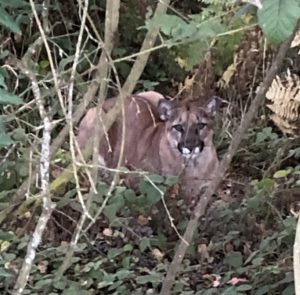
A mountain lion spotted on the farm
Sarah and Clara came next after a neighbor’s cat had a large batch of kittens. Sarah and Clara were more pets at first than “farm cats” and they played with the kids. I think pets are important for kids because they can teach a child how to express love and kindness. And, until “The lion lies down with the lamb,” it must be noted with sadness that pets can teach a young person how to deal with loss. Besides our “official farm cats” we also have our fair share of predatory wild cats, like Bobcats and Mountain lions. Yes, we have lots of coyotes too, and since they make so much noise they end up taking the blame for most disappearances, but I’m convinced that the Bobcats are often the culprits; it’s just that they come and go with such stealth. Sarah and Clara did grow up to be hunters, but we lost Clara.

Sarah, the Rockabilly Hep Cat, lounging
Sarah lost a leg to cancer, and she became a full-time house cat. Sarah liked to sleep on my Fender amplifier when I played my electric guitar, and since I play an orange Gretsch 6120, like Duane Eddy and Poison Ivy, I called Sarah my “Rockabilly Hep Cat.”
After Sarah passed away Starr and I adopted two kittens from the local shelter and she named them “Samson & Deliah,” after the Reverend Gary Davis song that was popularized by the Grateful Dead. Samson is still with us, and he’s as beautiful and lordly as an apricot blonde male cat born under the sign of Leo can be. But Delilah tended to wander into the forest where the wild things are, and one day she didn’t come back. We felt sad that Samson didn’t have company so we kept our ears open for kittens. When our friends, Todd and Jordan, who have Happy Girl Kitchen in Pacific Grove and who put our farm’s produce in jars for us, bought a place in upper Carmel Valley, we were gifted two matching tabby kitten twins. The rural property that they purchased had an unruly tribe of feral cats on it, so they set about catching them and spaying and neutering them and finding homes for the kittens.
The two kittens showed up early in the whole Covid drama, and they very much lightened the mood for us. They were small and wild, but proved to be very sweet and tameable. We initially named them “Cachagua & Tassajara” after landmarks in the neighborhood they came from, but Starr shortened the names to “Casha and Tassa.” The sisters are not quite identical, but they can be hard to tell apart from a distance, so they are often known as “This and That,” as in “this cat” versus “that cat.” This and That have turned into good hunters, and they’re helping Samson to keep the ever-present population of gophers in check.
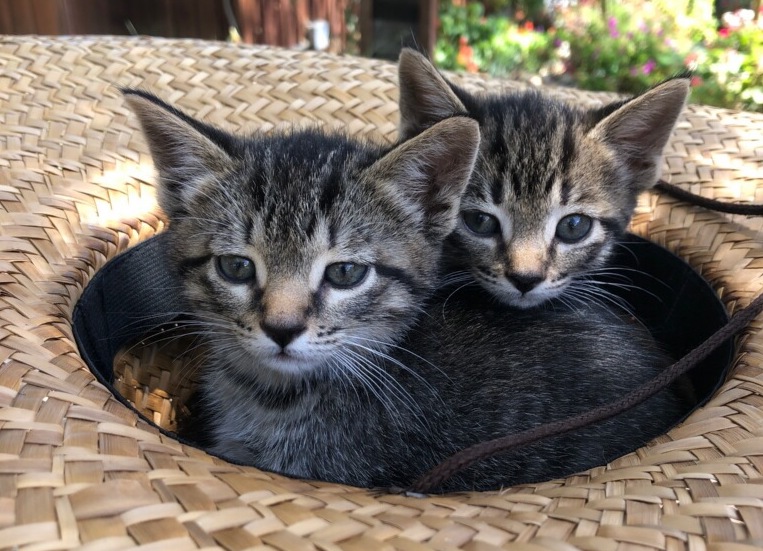
Casha and Tassa as kittens
Because we love our cats and appreciate their efforts, we have planted plenty of catnip around the farm so that they can pepper all their hard farm labor with moments of euphoria. Catnip is in the mint family, but it tolerates relatively dry conditions. We have it planted on a sunny slope and it’s thriving. Catnip is one of those plants that could become a weed if we let it, but we clip it and dry it before it goes to flower. Catnip dries well and remains pungent. It’s spring now, and the plants are growing fast so Starr has been keeping the dehydrators working around the clock.
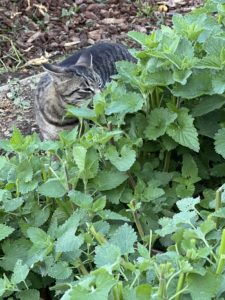
Tassa taking in the catnip
If you want to treat your cat to a whiff of locally grown, aromatic, organic catnip, now is the time to get it. Or maybe you want some for yourself. Catnip is usually thought of as a cat herb, but people do make aromatic herbal infusions from it that are reputed to be good for treating colds, fevers and flues, and dried catnip is used as a seasoning in some cuisines. I offer it to my restaurant customers and I’ve noticed that the places that focus on Italian food buy it. I need to ask them how they’re using it. Catnip, or Nepeta cataria, has a scent that is not unlike its cousin Nepitella, or Calaminta nepeta, also known as “Roman mint.”
Tassa likes to hang out when we garden. She is Mariquita Farm’s “spokes cat” and social media influencer. She enjoys and endorses our catnip products and personally oversees the harvests. Check out the shop store, we are harvesting today!
© 2022 Essay by Andy Griffin
Photos by Andy Griffin and Starr Linden
Three Weeds’ Tales
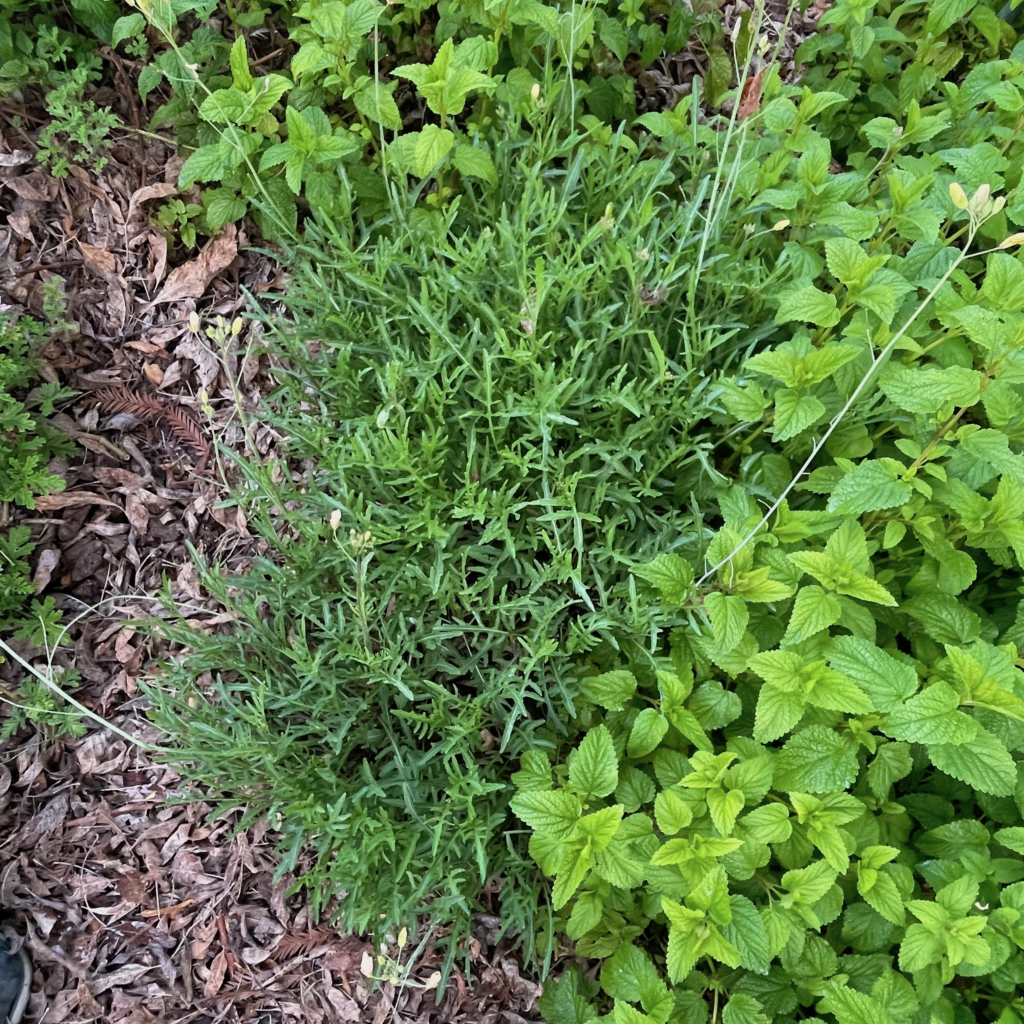
Wild arugula growing in a lemon balm patch
Here’s an irony: My father was a California Native plant ecologist who dedicated his life to the study and preservation of native species, and yet I grew up to be at least partly responsible for introducing at least three weeds into the California ecosystem. If a weed is a “plant out of place,” then every weed must have an appropriate place that it naturally comes from and also a story of how it immigrated to its new environment. Here are the stories of three different weeds that I can tell from first hand experience.
My father, Dr. James Griffin, would have been 90 last week, and he’s been on my mind a lot. He didn’t do marine botany, but it was hard to find a dirt road or trail in this state that he hadn’t made his way down at least once to inventory the vascular plants. He’d be the first one to tell you that a vast amount of the plants that blanket California’s wild lands are invasive species. The grasses that cover the fields with green in the spring and gold in the summer are Mediterranean annual species that came into California as burrs and stickers in the tails of the long horned cattle that the Spaniards brought with them from Europe through Mexico.
Arugula is such a popular salad green on the West Coast that right wing pundits have chosen it as the appropriate fodder for bicoastal elitist libs, but arugula started out as a little weed in the barley fields of ancient Egypt. Arugula is in the mustard family and has always been a popular salad herb. The Egyptian farmers that cultivated some of history’s first fields of grain would have plucked the broad, tender leaves of young arugula from between the slender young, emerging blades of barley so that the grain crop wouldn’t be choked out. The arugula “weeds” were eaten too, but they needed to be controlled lest they damage the cash crop. As the culture of grain spread north out of the fertile crescent, arugula followed along. Soon Greek peasants were sowing grain and weeding – and eating the arugula. Then came Italy, then France. But if arugula traveled to France as a weed it flew into California on a magical white tablecloth.
Nowadays, with the oceans of pre-washed salad greens available in every supermarket, it can be hard to remember when salad greens like arugula were hard to find in California. My first job on a vegetable farm was working on a little Biodynamic, French intensive garden on Garden Highway, just north of Sacramento. The farm’s owner worked at Chez Panisse in Berkeley and they bought all the produce. They wanted tender young greens like arugula for their mesclun salads. Because the arugula seed was next to impossible to source, the restaurant brought us back packets of seed from France. When I went to work on Star Route Farm in Bolinas we ended up working with them too and we made endless plantings of arugula. Inevitably, some of that arugula went to seed along the edges of the field, where a stray plant here or there conspired to escape the disc harrow when the fields were turned under.
Twenty years after I left Star Route Farm, I was there on a visit, and I took a walk up Pine Gulch Creek, which borders one of the fields. I was surprised and amused to see a number of arugula plants growing wild in the weeds beyond the edge of the tilled beds. And I found a number of wild mustards that appeared to have leaves that had many characteristics of arugula, as though the two cousins had crossed. I wouldn’t worry about spoiling the gene pool for the wild mustards, though, since the wild mustards were also invasive species from the Mediterranean that have made California their home.
—
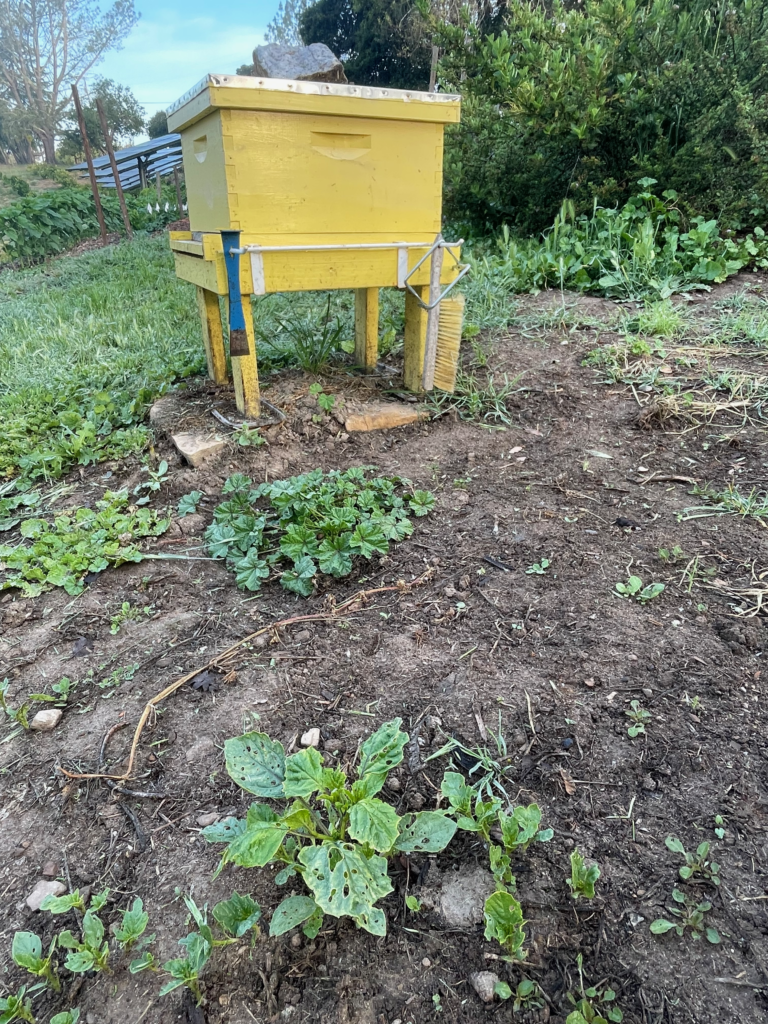
Tomatillo weeds in front of our beehive
The second weed that I’m at least partially complicit in introducing is the Tomatillo de Milpa. Everybody is familiar with the tomato-like and tomato sized Tomatillo that is so common in Mexican cuisine. But the large, green, commercial tomatillo has an unruly, weedy cousin, the Tomatillo de Milpa, which sets a generous crop of tiny, somewhat dry and acidic fruits that range in color from green to straw to purple.
The plant has its fans. Zuni Cafe, for example, has often requested the “Milperos” in lieu of the plumper, more commercial cultivar. I hadn’t heard of the crop before I moved to Watsonville. I shared my home here with the Campos Family for a couple of years, and they were from a ranch outside of La Barca, Jalisco. “Country living is great,” Ramiro Campos told me one day. “It’s so nice to have lots of space and keep donkeys and chickens and have a big garden.” So I invited Ramiro to make a garden here, and he went after the task with gusto. He showed me a handful of tomatillos de milpa that he’d brought with him from his home ranch to plant because, as he said, “no garden should be without a tomatillo de milpa.” And we’ve had tomatillos de milpa ever since. These humble plants express a vitality and fertility that rivals any other weed I’ve ever met. But at least I can make a really nice green salsa without leaving the property almost any day in the summer or fall.
—
My last weed is another refugee from Southern Europe. Nepitella is a mint family member that prefers a very well drained soil and can tolerate drought. It seems as though every region has a native mint, which is appreciated for its unique culinary properties. Nepitella is also known as “Roman mint,” and it is a popular herbal accent to many a Roman and Tuscan dish. When I was regularly selling in the Ferry Plaza Farmers’ Market in San Francisco, a frequent market shopper brought a nepitella plant to my stall from his family’s garden in Rome. “I’ll give you the plant if you’ll grow it and bring it to market so that I can have a bunch of it now and then.” I’d had customers, like Delfina in the Mission or Scoma’s in the Marina, asking after nepitella, so I went after the task with gusto.
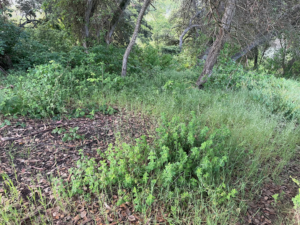
Nepitella, aka Roman mint, growing wild in our canyon
Ever since then, this perennial herb has been a steady, if slow, seller. At one point, years ago, I planted it at the edge of my home field so that I could keep enough going to satisfy my customers without getting in the way of regular use of the field. When the sales picked up I moved my planting to the greenhouse where I could be more assured of steady winter production. This spring I was walking my fence lines at home, looking for a hole where a marauding tribe of deer might have broken through into my farmed ground. I didn’t find any holes in the fence, but I did find a vibrant population of hardy nepitella plants beyond the fence and spreading down into the Pinto Creek gulch. The Romans may like nepitella, but the deer sure don’t; the plants were fluffy, aromatic, and happy. What would my father think? I’d have to make him a pasta dish and season the sauce with some fresh nepitella to justify myself.
© 2022 Essay by Andy Griffin
Photos by Andy Griffin
I Beg Your Pardon
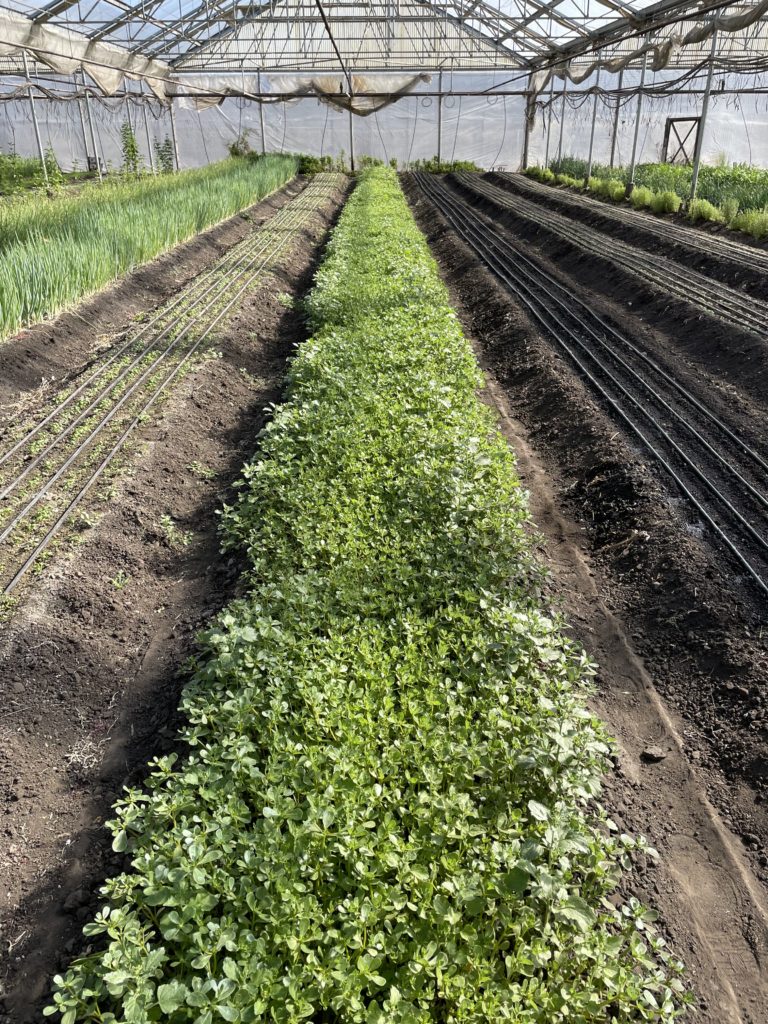
Purslane, cultivated as a crop
“April showers bring May flowers,” goes the old saying. If they were being accurate, the cliche makers of olde could have added: ”…and weeds too.” After a punishing period of drought we’ve finally had a few April showers, so we can expect plenty of weeds in May. I’ll be crabby about all the weeding we have to do this spring, but today, instead of complaining about the added labor costs, I’d like to change up the narrative and talk a bit about the positive role weeds can play in agriculture if we let them. But first, what is a weed?
Weeds are perhaps most charitably defined as “plants out of place.” This formula sounds good as a start but this clever quip reveals more about the person speaking than it does the plant in question. An objective observer has to ask, “‘Out of place’ according to WHO?” Take the archetypal “weed,” Cannabis sativa, for example. Talk about a “plant out place;” weed is a plant SO “out of place” that its very existence has been outlawed by the US government.
Not that the Cannabis plant itself cares about what governments think. From its humble roots as an aromatic herb growing in the wilds of central Asia, Cannabis sativa has not only continued to thrive in its natural habitat but has spread all over the world as a cultivated crop, finding its way into indoor closets and warehouses. It has even escaped cultivation to exist as a feral “weed” in ditches and fields in North America. People have taken advantage of this plant as a source of fiber, as a medicine, as an oil producer, as a food, and as a drug, and cannabis has taken advantage of people to care for it and propagate it.
Cannabis, like all “weeds,” is a plant that exists in relation to people. Our relationship with weeds is fraught; we resent the success that weeds enjoy in spite of our objections, so we have forgotten much of what weeds can teach us and we invent new ways to try and destroy them. In trying to rid ourselves of weeds we sometimes blindly contaminate our own water supplies with herbicides. But we might have fewer “weeds” if we learn to see how such successful plants can have a valued place in our world.
Many people would be surprised to learn that many of the “weeds” that populate our gardens were plants that we once cultivated in our gardens. Lactuca serriola, for example, which gardeners variously and inconsistently refer to as “wild lettuce,” “prickly lettuce,” or “Sow thistle” is the ancestor of the lettuce that’s for sale in the market. Not only is it edible, Sow thistle has more nutrients in it than “regular” lettuce. Lambsquarters, aka “dungweed” or “Goosefoot,” is an antique form of spinach. Stinging nettles, or Urtica dioica, is another “weed” that was imported here to the Americas from Europe as a food crop. French purslane, or Portulaca oleracea, is a common garden pest – until you learn to eat it! The Mexicans know this “weed” as verdolaga and esteem its use in the kitchen as a cooking green, like spinach. I’ve also enjoyed fresh purslane as a main ingredient in a flavorful, spritely Moroccan salad.
If more of us learned to use the weeds in our garden we’d have fewer “weeds” and a more diverse gardenscape. But weeds are perverse, temperamental and ornery. Besides being higher in vitamins and minerals than many of their more modern, refined, and esteemed cultivated cousins, many edible weeds are quite high in irony; I’ve been amazed to see that whenever I begin to make money by selling the weeds from my fields they tend to disappear from the rows.
The high nutrient value of weeds is not lost on the insects that feed on food crops. When I worked on Star Route Farm in the early 1980s my employer, Warren Weber, taught me to use some weeds as insect trap crops. Shepherd’s Purse, or Capsella bursa-pastoris, is a little weed in the Brassica family that would often germinate along with our rows of kale and broccoli. And frequently we would be plagued with wild mustards and wild radishes too, which are also brassicas, just as the kales and broccolis are. Warren said, “If we wait to weed out the kale and broccoli, the flea beetles will feed on them instead of our crops.” I observed that, time and time again, this was true. The insect pests preferred the weeds! So we would wait until the kales and broccolis were past their infancy and big enough to withstand the flea beetles before we cleaned out the “weeds” that the pests were feeding on, and our crops were happier for it.
When I was farming on my own and raising artichokes, I learned to leave a fringe of thorny, mean, milk thistle, or Silybum marianum, growing at the edge of the field, and they would tend to draw off most of the Artichoke plume moth, whose wormy larvae can bore into the tender artichoke buds. Then one day a visiting chef, Tiny Maes, who worked at Kokkari, a Greek restaurant, showed me how young Milk thistle plants can be used as a traditional, rustic, winter ravioli filling. Thistles, like so many other weeds, are forgotten foods
Besides being food crops and/or insectary crops, some weeds are valuable tools in monitoring soil health. Nettles will only germinate in soils that are very rich in nitrogen. Often you’ll find nettles thriving in abandoned corrals or fields where cattle or horses left lots of dung years before. When I see lots of nettles popping up I know that spinach, lettuce, and chard will all grow well, because they need lots of nitrogen to do well. But as the ambient nitrogen levels drop because the resource has been depleted then the nettles will disappear, and I’ll know it’s time to fertilize again.
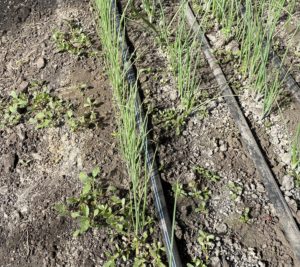
Purslane in its wild “weed” form
Weeds can tell you when to plant too. Purslane, for example, only germinates when the soil is warm, so the first day I see a purslane sprout in the bed I know I can safely plant the seeds for a whole range of summer crops that would rot in cold soil. When the wild Tomatillo weeds sprout I know I can safely plant tomatoes. Other weeds can suggest crops to grow too. When there’s a lot of Poison Hemlock, or Conium maculatum, in a field you can bet that carrots will grow well there, as both plants are in the Umbellifer family. A healthy field of weeds promises a healthy field of crops (with enough work) just as a field where even the weeds struggle probably won’t bear happy vegetables without a lot of help.
Weeds are a problem, but they are not the worst problem a farm can have. Since they are almost inevitable companions if you don’t want to use herbicides, it can be good for a farmer’s mental health to remember their benefits. The days are getting longer, the soil is getting warmer, and because we had some nice rain, we’ll soon have a vigorous crop of weeds. Where it is convenient, I’ll wait as long as I can to turn the weeds under. Their roots reach down into the soil and bring up valuable minerals. Before they go to seed I’ll turn them under and treat them as a “cover crop.” Weeds will get the last laugh, I’m sure, but they can be useful jokers.
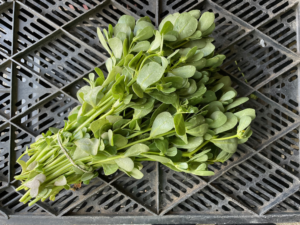
Tasty Mariquita purslane!
This week I’m putting Purslane or “vedolaga” in the harvest box. It’s hard to say this is a really a “weed” since I’ve grown it for several customers who have Mexican restaurants. Treat it like spinach and you’re off to a good start. It’s good in soups too. I used to grow it for Boulette’s Larder in San Francisco, and I bought the “Improved” French Purslane seed from a seed company but, irony of ironies, Chef Amyrll Shwertner prefered the wild, “weedy” form of the plant because it was smaller leaved and looked better on the plate. The Purslane seeds I’d bought became the weed!
© 2022 Essay by Andy Griffin
Photos by Andy Griffin
Simple Pleasures
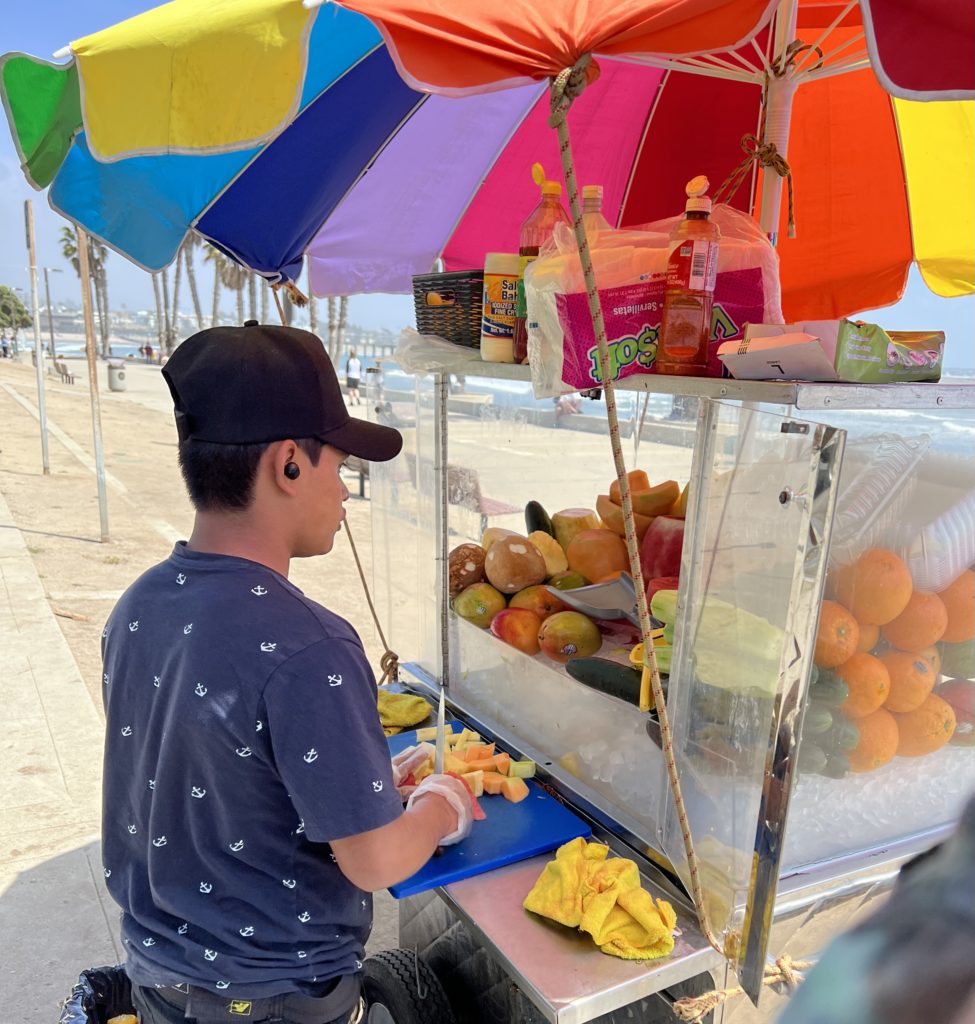
A beachside fruit vendor in Ventura, CA
With the tomatoes going into the ground this week, and with our first harvest share boxes for the Bay Area going out for delivery, Starr and I took a brief getaway down to Ventura ahead of what we hope will be a very busy season. It was a very mellow scene with warm weather, gentle breezes, a white beach, and surfers bobbing in the waves. We took a walk down the esplanade, and it was the typical zoo of Southern California humanity: tattooed women on unicycles, rainbow-clothed Deadheads selling bootleg swag in the shade of the palm trees, a gentleman taking his 6 foot boa constrictor for a walk on the lawn, and of course there was a fruit vendor.
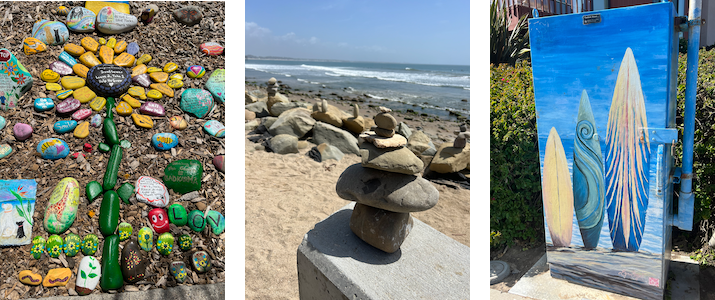
We stopped at the fruit vendor’s cart and bought a serving of chopped, fresh, fruit. It felt very much like being back in Mexico. Mango, watermelon, cucumber, pineapple, cantaloupe, and jicama chopped and tossed with the juice of a fresh lemon and then dusted with red chile powder. As I watched the waves roll in and enjoyed the fruit, I had the thought that this simple preparation would be perfect with kohlrabi standing in for the jicama. Maybe even better, I thought, because the kohlrabi has the toothsome crunch of the jicama, and the white color which contrasts so pleasantly with the orange, red, and yellows of the fruits, but it has its own sweetness that makes it almost fruit-like.
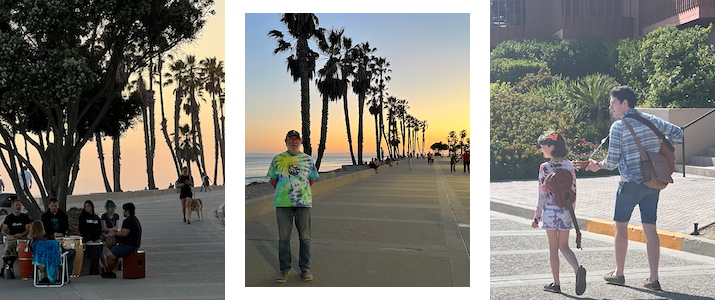
When we have kohlrabi people always ask me, “How do I cook it?” My new answer is going to be, “Don’t.” And while we wait for fruit to come into season up here, kohlrabi can make a lovely salad all on its own, with maybe some chopped green onion. If you slice the kohlrabi, lightly salt it, and dress it with lemon juice, it tastes great. If you have the patience to put it in the fridge and wait a day, it tastes even better.
 The lavender colored beans in your box are “Flor de Mayo,” or “May Flower” beans. In Mexico they would be flowering in May, but we planted our crop last summer and harvested them in late fall. We’ve saved the seed we’re going to plant so everything else is available to eat. They cook pretty quickly. A lot of people feel that it’s necessary to soak the beans overnight before cooking, but I never bother. These are so fresh they cook up fast and easy and soaking doesn’t achieve anything dramatic.
The lavender colored beans in your box are “Flor de Mayo,” or “May Flower” beans. In Mexico they would be flowering in May, but we planted our crop last summer and harvested them in late fall. We’ve saved the seed we’re going to plant so everything else is available to eat. They cook pretty quickly. A lot of people feel that it’s necessary to soak the beans overnight before cooking, but I never bother. These are so fresh they cook up fast and easy and soaking doesn’t achieve anything dramatic.
A bit of rain today and then some sunshine should be just right.
See you soon,
Andy and the Crew at Mariquita Farms
© 2022 Essay by Andy Griffin
Photos by Starr Linden
A Field with a View

Mt. Shasta looms over Redding, CA
What’s the stupidest thing you’ve ever done?
I’ve been busy in that respect but, with Mt Shasta as my witness, I have to say I’m lucky to be alive today. It happened a long time ago, but there are some “teachable moments” in my farce, so let me tell you the story.
Mount Shasta looms over much of northern California like Fuji over central Honshu: majestic, sacred, and iconic. When I was 16 years old I took my first job away from home working on a ranch just north of Shasta, and I never got tired of taking in the view. Because we’re about to start our farm’s harvest share program in the Bay Area for the 2022 season, and because I know I’ll be frantically busy for the next eight months, I decided to take a brief road trip up to Portland last weekend to visit my daughter, Lena, who works as a baker there. The drive north took me straight up I-5 and past Mt. Shasta, which stirred up a lot of memories.
My father was a botanist, and I recall him saying that when he was a grad student in forestry at UC Berkeley in the early 1950s the air was still clear enough to get a view of BOTH Mt Shasta and Mt Lassen on the horizon from Vacaville. It might still be possible on a rare clear winter morning after a rainstorm, but as I drove up the valley the other day I was past Orland and I still couldn’t see the mountains. I did see a kid “pulling a tarp” in a field of alfalfa that was being flood irrigated though, and I had to laugh. Been there, done that…

Drip irrigation tape wetting a sowing
On Mariquita Farm we have to be very conservative with water. We share the well with Hikari Farm, and the agreement we have with them is that Mariquita can water the crops every Monday, Wednesday, and Friday while they get to use the water every Tuesday, Thursday, and Saturday. And we only use drip irrigation, even to germinate the crops of greens.
But when I was working in the alfalfa fields in Northern California as a kid, we let the water flow across the landscape like there would always be plenty of rainy days. My father visited me on the Shasta ranch that summer and he shook his head in amazement when he saw me pulling tarps. “A crude, but effective method,” he said. “There are 5000 year-old hieroglyphics on stone walls in Egypt that show people irrigating this way.”
By “this way,” he was referring to the practice of flooding fields to irrigate them by using a series of ditches. It works like this: There’s a “Ditch Master” in charge of distributing the water of the district through a series of canals. When it’s your turn to receive your allotment of district water you need to be ready— it’s ALL the water you’re going to get, so you use it or you lose it, but you’re paying for it either way. Your ditches need to be clear of weeds or other obstructions, and you must make sure that no badgers or squirrels have burrowed holes in the banks which might leave tunnels that guide the water astray. And you need to have your stakes and tarps ready and in place.
When the ditch master turns the valve, the water rushes from the district canal down the empty ditch in a mindless hurry. It’s your job to discipline it. Every so often down the length of the ditch you need to have a sturdy log placed that spans the ditch and is firmly anchored in place. Beside this log you need to have a pile of sharpened sticks and also a heavy, canvas tarp. Before the water arrives at the first field you intend to irrigate you need to have already built your first dam. To do so you poke a series of sharpened sticks into the earth on the bottom of the ditch and then lay them up against the log that spans the ditch. Once constructed, the frame of your dam-to-be looks like ribs sticking down from a spine. Then you lay the tarp against the rib cage, from the top to the bottom, and the loose edge of the tarp is stabbed into the dirt with the point of the shovel. When the water arrives at the dam the tarp traps it, the dam restrains it, and so the water rises in the ditch until it overflows into the field.
As the water flows down the length of the field it is conducted and constrained through a series of “checks,” which are long, low parallel, raised mounds of earth—like speed bumps—which run the length of the field. While the irrigators are waiting for the water to adequately soak the ground they can usually use the time by building the next dams and tamping the canvases in place. That way, when it’s time to move the water they need do nothing more than “pull the tarp” from the upstream dam to release the water to flow further down the ditch. But you don’t “pull” the whole tarp at once—that would be hard to achieve due to the weight of the dammed water that pins the tarp to the wooden ribs—so you pull the top of the tarp down just a little so some water spills out, and then a little more, and a little more. Shenanigans can ensue, of course; your dam can break downstream if you release too much water too fast, or your tarp can get swept away in the flood as you release the water carelessly. Sometimes the ditch water has fish or snakes in it, or some other excitement. Back in the day in ancient Egypt an irrigator probably had to watch out for crocodiles. I had it lucky!
Once the ditch master opens the floodgates in a farm’s main ditch, the irrigators are busy until the water delivery contract has been fulfilled. On the day of “my greatest stupidity” we’d been irrigating around the clock for three weeks straight. We would do the short sets in the day and leave the longest sets for the night time so that we could get some semblance of sleep, but even at that I was getting up at 10pm, 12 am, 2 am, 4 am, and then we started the regular day at 6 am. So it’s fair to say I was very tired, and starting to get kind of dreamy in the afternoon. I had a field to irrigate that had over a hundred head of Brangus cattle in it. I set the tarp, let the water flow and looked south across the field at the dog and Mt Shasta.
The dog was always a help because she ran back and forth in front of the advancing water, so you could judge how far along the water had reached without actually walking the field yourself. And she busied herself snapping up the gophers that were driven to the surface by the flood. Sometimes she would even catch a fish. The water came out of the Little Shasta River and it had all kinds of creatures in it: turtles, crawdads, trout. And then Shasta. You can’t look at anything up there without having Shasta as a dramatic backdrop. I never got tired of looking at.
I’d been gazing at Shasta in a stupor for a while, and I heard a snuffling. I slowly looked about and saw that the cattle had gathered around me at some distance and were sniffing and ogling me, trying to figure me out.I stood there still as a post, and they slowly advanced as their curiosity overcame their fear. “I’ll bet this looks interesting from the air;” I thought to myself, “these cattle gathering around me in a ring. If I wait until they’re really close, then startle them, it would probably look like an exploding meat flower.”
And that’s exactly what I did: When the cattle got so close that I could smell their breath, I jumped up and yelled! They bolted in a panic. It probably did look like an exploding meat flower if observed from above. I certainly scared the shit out of them, and I had to walk through it as I went to pull my tarp and move on to the the next set. I’m lucky they didn’t trample me. And I feel bad about it now, because it wasn’t a nice thing to startle the cattle, and I do like cows.
By the time I got to Red Bluff I could see both Shasta and Lassen. It was a beautiful day. The weather has warmed up a lot, the soil is warm, and it’s time to plant tomatoes next week.
© 2022 Essay by Andy Griffin.
Photos by Andy Griffin
A Note from Andy
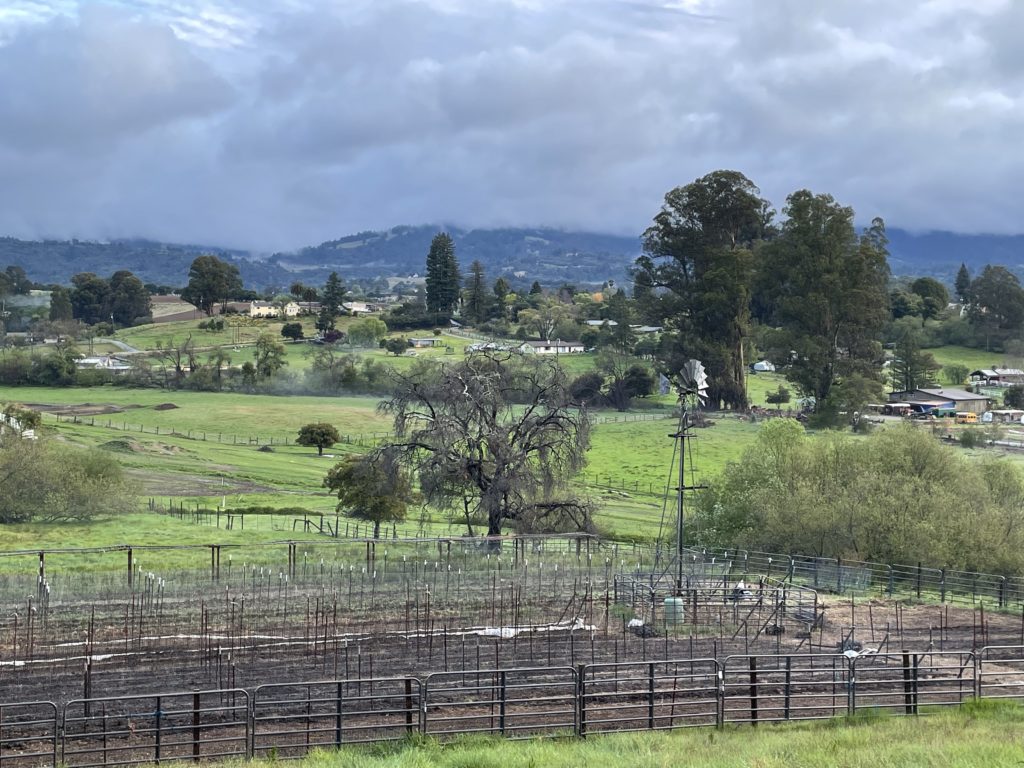
The pole bean patch has been laid out; gopher wire under the the ground, poles and trellis wire above ground. The first beans were planted last week. The white stripe you see is a row cover laid out to protect emerging seedlings from birds.
Hi All: We finally got some rain- two inches last night. The world feels fresh and beautiful but there are no puddles because the thirsty soil drank it all up. The frost seems like it has passed, so we’re busy planting the cold sensitive crops. Planting is going full speed ahead inside the green house too, and the young citrus orchard made it through the frosts of its first winter.
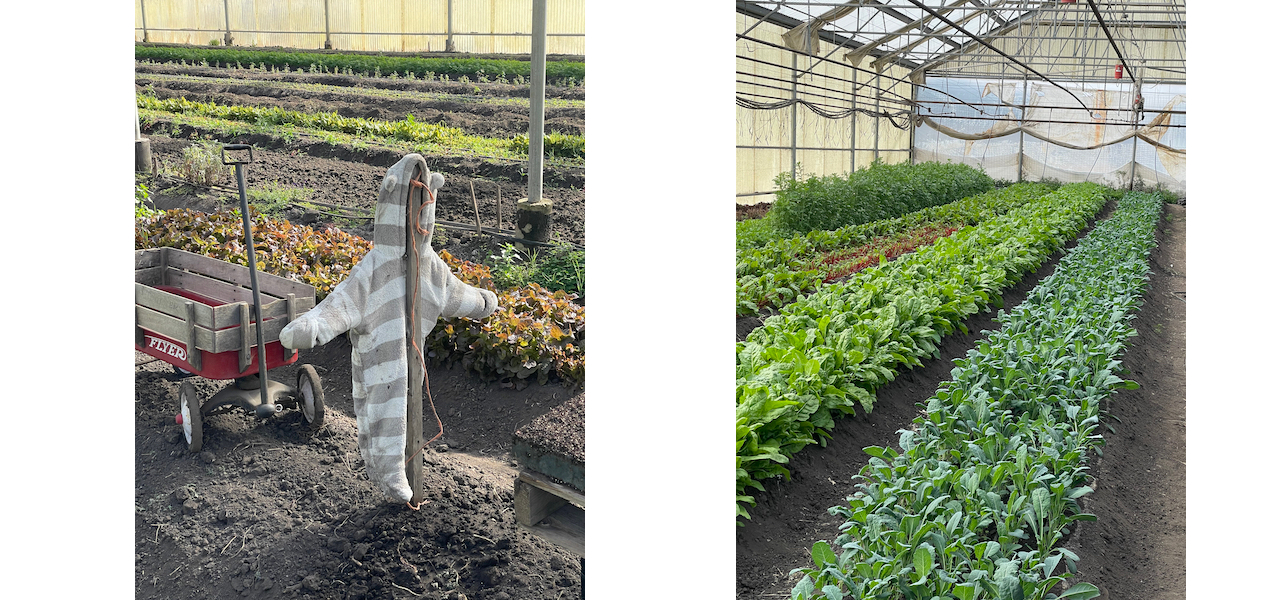
Left: The scarecrow we’ve put up to amuse the birds that fly inside. | Right: Kale and chard growing in the greenhouse.
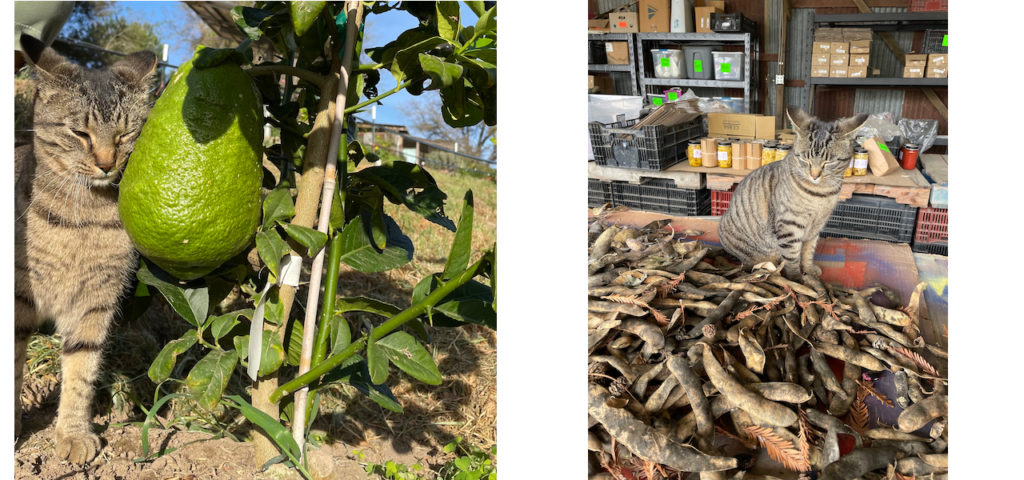
Left: Our kitty, Tassajara, rubbing on an Assadas citron. | Right: Casha reflecting on the bean pods we saved for planting this spring before we shell them.
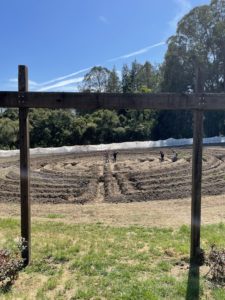
Akira and Moyu from Hikari Farm visit us as we work on our lavender labyrinth planting.
That’s life on the farm on a morning in spring!
© 2022 Captions by Andy Griffin.
Photos by Andy Griffin.
Magic Beans
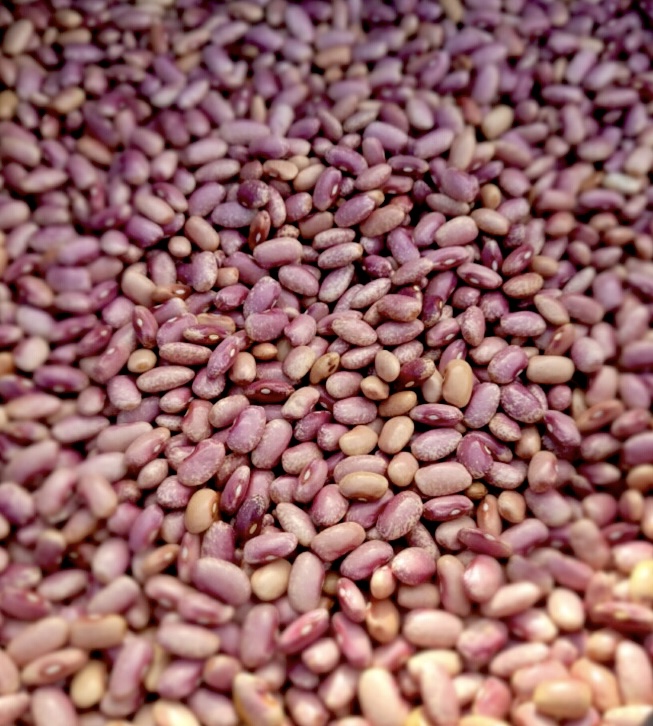
Controversy was swirling at a recent school board meeting- “A REAL FOOD FIGHT!” read the headline of one local rag that covers civic affairs. But did the drama amount to a hill of beans? We investigate.
The trouble started when Ms Brooks read the classic text, Jack and the Beanstalk, to her kindergarten class. You remember the tale: Jack trades the family cow for a handful of magic beans which, when planted, grow up to the clouds. Jack climbs the beanstalk and discovers a castle occupied by a giant, etc. The kids loved the story, so the trouble didn’t start until they got home and told their parents what they’d learned at school that day. Many parents were outraged. Karen Feldenheimer was one of them.
“What are you teaching the kids?” she wanted to know. “There is no such thing as a ‘magic bean,’ because there is no such thing as magic. It must be a GMO bean! That’s evil!”
Carlo Avila, another involved parent, voiced the concern that this alleged “fairy tale” covered up the uglier aspects of Western colonialism. “How can we speak of ‘magic beans’ in an old Northern European fairy tale?” he wanted to know. “Prior to Columbus, the Europeans had no ‘beans.’ Sure, they had pulses, like peas, lentils, garbanzos, and favas, but true beans were only native to the Americas and so Jack couldn’t have encountered them in Pre-Columbian Northern Europe. Why do we whitewash the role that Native Americans played in developing so many of the world’s food staples?”
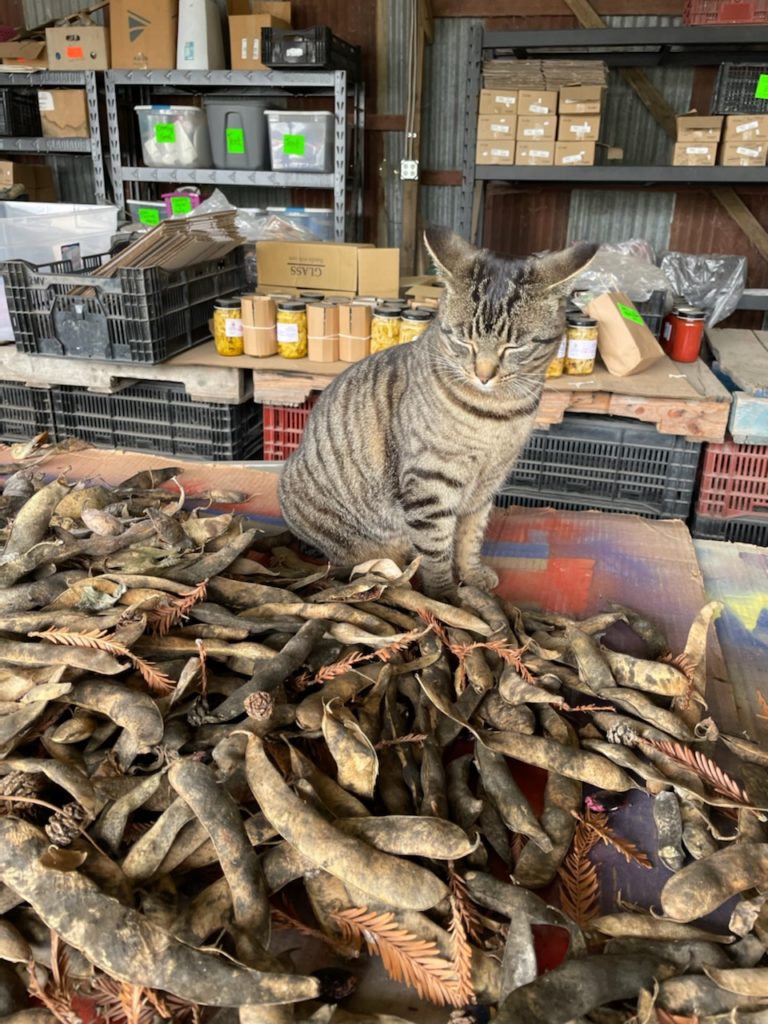
The cat inspecting the runner beans we saved for seed and will shell this week.
Jeanine Silva, a concerned mother of three, had a more nuanced perspective that she sought to voice, but perhaps the rowdy school board meeting was not the right forum. “True,” she said. “Pre-Columbian Europeans–even their Giants in the clouds–had no Phaseolus beans, and certainly they had no climbing beans like the Scarlet Runner beans, but they did have favas. And even though the favas don’t grow to the clouds they do grow tall!” She pointed out that the fava stems are hollow. “The ancient Egyptians believed that the spirits of the dead ascend to the clouds from the earth they were buried in by passing from the roots of the fava up through the hollow stem. Perhaps Jack ascended through a fava stalk? Can we agree it’s a possibility?”
“More evil magic!” yelled Karen Feldenheimer. “Let’s just teach the kids math!”
Frank Duval, the school’s oldest math teacher, was attending the meeting. He knew that Jeanine Silva was on to something but he felt insecure about supporting her in a public setting, as he was on the staff and couldn’t be seen taking sides. Frank was familiar with Pythagoras and taught the Pythagorean theorem as part of the regular curriculum. Frank also knew that Pythagoras had learned his math in Egypt. While Pythagoras is well known in geometry classes for his math skills, it is not today widely known that he also believed and taught his followers that it is evil to eat “beans,” and by “beans” Pythagoras meant favas. Why would eating fava beans be “evil” for Pythagoreans? It must have something to do with respect he had for the fava being the channel the spirits took to the afterlife, Frank reasoned. But he kept his mouth shut while the parents fought over beans. Sometimes people are not really interested in being informed or in questioning their assumptions.
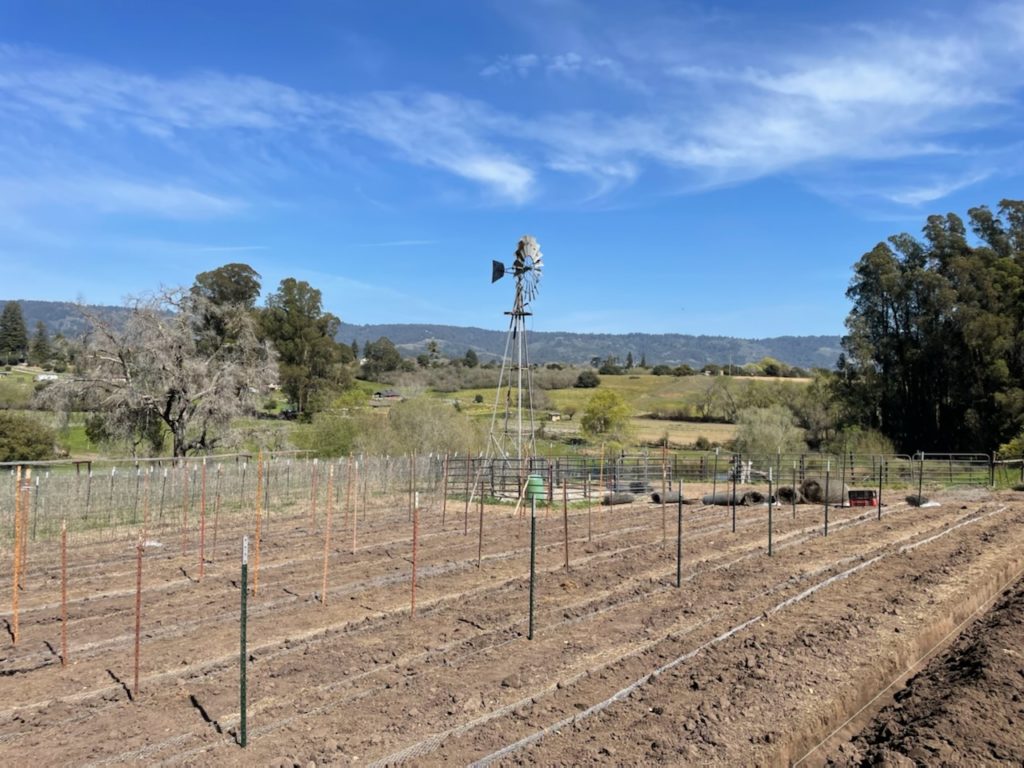
The bean patch.
So where does that leave you and me? Are these “magic beans” that I’ve put in your harvest share box? I’d say, “yes and no.”
Even after 40 years of farming, I still think it’s magic when seeds sprout. The beans in your box are “Flor de Mayo,” or May Flower beans. We planted them last year in May when the danger of frost had passed. They are climbing beans, and we let them scramble up a trellis. They yield over a long season, and we saved the last of the crop last fall to be able to offer it to you this spring. Meanwhile, we’re already getting started on this year’s bean crop. Besides Flor de Mayo, we will be planting Oaxacan red beans and several kinds of pole beans.
In order to get a nice bean crop this coming fall, we have dug trenches and put down gopher wire to keep the gophers from eating the plants. On top of the ground we’ve put stakes and wire mesh for the vines to climb up. We will plant the seeds we saved from last year’s crop in about 10 days when the soil has warmed up. We are focusing on runner beans and other pole-type beans because they taste good and yield over a long season. They won’t grow to the clouds, but two of the varieties that we’re planting will form underground tubers, like potatoes, and sprout back from under the ground every spring. That’s magical too, as far as I’m concerned, and the repeat harvests will help amortize the start-up costs of laying out the wire and stakes.
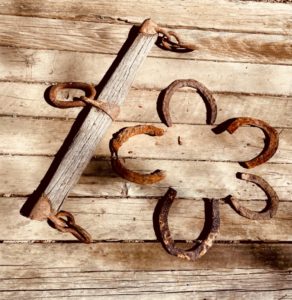 When I was prepping the ground for the beans I turned up a bunch of rusty horseshoes. The field where I’m planting the beans was farmed with horses back in the day. My uncle told me that my great grandpa grew cucumbers there for Heinz, the pickle producers, back in the 1920s. I found five horseshoes so far and with that kind of luck we should have a wonderful bean crop to share with you. I guess the horseshoes are “lucky,” but they’re hard on the rototiller.
When I was prepping the ground for the beans I turned up a bunch of rusty horseshoes. The field where I’m planting the beans was farmed with horses back in the day. My uncle told me that my great grandpa grew cucumbers there for Heinz, the pickle producers, back in the 1920s. I found five horseshoes so far and with that kind of luck we should have a wonderful bean crop to share with you. I guess the horseshoes are “lucky,” but they’re hard on the rototiller.
Happy Spring!
From all of us at Mariquita Farm
© 2022 Essay by Andy Griffin.
Photos by Andy Griffin.
